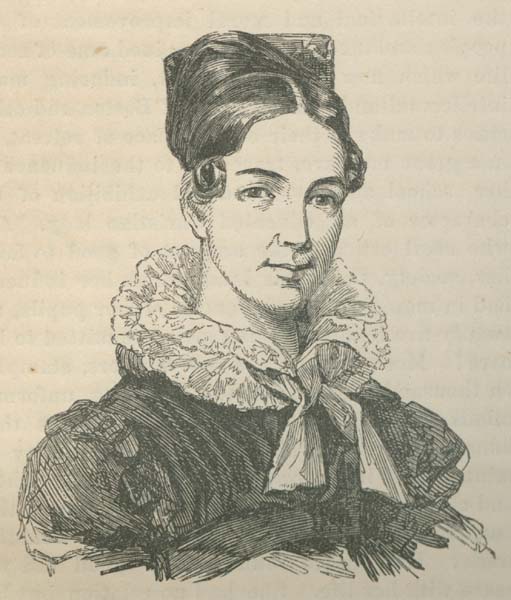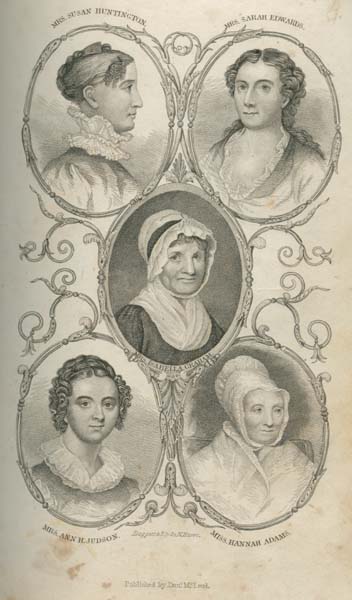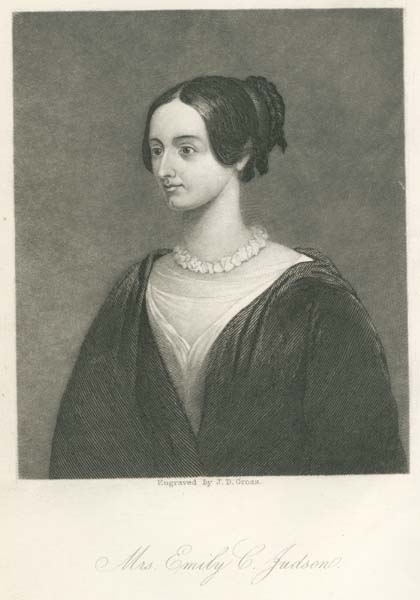O'Connor ENGL 227
rotcchica17
As far as early America was concerned, women were not considered people, let alone leaders in religious organizations, and if they were, they certainly did not possess much credibility. In this project, I sought to illustrate how contradictory and challenging it was for women to live up to their roles while at the same time, gaining the credibility necessary to persuade others to listen to them, as leaders, in their religions. What was valued, important and right were not always the same, were not always acceptable. If you think about it, if John Edwards were a woman, people would not have cared half as much about his "City On A Hill" speech.
|
Frances M. Hill was the daughter of a New York City lawyer who married Rev. Jon Hill. Upon joining the "the Episcopal Church’s movement in 1831 to aid members of the Greek Orthodox Church following the Greek War of Independence," she traveled to Athens with her husband to teach at a girl's school. However, I do not believe that the "instruction" must have been very noteworthy when Hill claims this in an article in Women's Record: “We have seen the powerful effect of a good and virtuous education overcoming the custom of ages, and the power of Mammon. Many parents who have had no other dowry to bestow upon their daughters but this – ‘that they had been educated in our schools,’ – have married their daughters to men of education and good sense." What strikes me as somewhat ridiculous is this idea that these Greek girls are receiving an "education" just to turn around and be traded like some stock on the Nasdaq. It is unfortunate that girls in this time period do not even take themselves seriously, seeing as the proper thing to do was to be a quiet, obedient woman whose parents had a nice dowry. How then is it plausible for us to expect a prestigous woman religious leader to emerge from this time period?
|

Going Public: Women in Nineteenth-Century Cultural History
|
|
On the other hand, this idea that prestigious women could not possibly come out of this time of male supremacy is a challenging concept for me to grasp, given my upbringing in an independent thinking society. In fact, it is difficult to delve through the pages of history and find truly amazing women given credit for their profound achievements. Women like Lydia Sexton, a white New Jersey woman who promised God that she would preach if he would save the life of her sick child, can be found in this book about women involved in "complicated spiritual warfare." Complicated because of the impossibilities of their situation, as a war because of their constant fight for a credible stance admist their existence in a prejudice patriarchal society.
It is a wonder if these writers' possessed an awareness of their own "social alienation." Of course, by being independent, self-sufficient thinkers, they certainly could be considered "unconventional women of faith." It is difficult for women like me today to imagine a world where female religious leaders ''make the world [their] household" while struggling to survive the hierarchical, alienating, and highly masculinized world of evangelism (56). ' |
|
In contrast to Edward's portrayals and beliefs in women's roles throughout his lifetime and within his various works, this account describes how, "evangelical women created novel roles for their literary characters and for themselves as writers and speakers." Which of course, leads us to believe that women were definitely not the airheaded wallflowers that past societies deemed them to be. They not only possessed insights to express themselves through their work, but also the foresight to realize that they were not going to be taken seriously in person. Moreover, with this in mind these evangelical women produced novels that spoke louder than they could've been heard, by developing characters that people wanted to relate to and captured their interests.
|

Going Public: Women in Nineteenth-Century Cultural History
|
I must admit that the information provided on Sarah Edwards (top right) from the website I found this picture on was quite humorous. John Edwards described her so dramatically as to make people question whether or not she could even be considered a person and not some sort of heavenly being. On the other hand her picture begs the question if the fact that she was "a deeply pious woman" was all she had going for her and may even be the only reason why she was taken as his wife. Was Edwards really marrying her for love or was it becuse he had some sort of political agenda? I guess we may never know but here is something that I felt needed to be shared due it's ridiculous nature: "according to the testimony of Mr. Edwards, she was led, under an uncommon discovery of God’s excellency, and in an high exercise of love to God, and of rest and joy in him, to make a new and most solemn dedication of herself to his service and glory, an entire renunciation of the world, and a resignation of all to God." Another concept to consider would be the fact that if women like Sarah Edwards had to have pastors like John Edwards lament on and on about their religious fervor for God and their "intense, mystical worship", how then were everyday women expected to measure up to these ridiculous notions of what religion should be? |
|
In this study of "female preaching in America," Catherine Brekus describes how “evangelical women lost their public voice”; their achievements were claimed by others, and their names disappeared from records.' Upon reading this, I began to wonder how this could happen so completely and thoroughly. Surely there had to be some facts that survived, some account of their stories. But then I recalled that concept about the winners getting to write history and realized how that could very well be the case. Pilgrims were separatists from the church of England but they weren't all equal. 'Brekus’s “strangers and pilgrims” were “biblical” rather than secular feminists. Most of them were as poor and uneducated as their audience; few supported political change. Revolutionary in defense of women’s preaching but orthodox in theology and often reactionary in their longing for an imagined past of stable communities, most defined themselves as helpmates, not leaders. Religious individualists, they condemned economic individualism; idealizing the home, they left it to preach. ' From this study by Brekus, we almost see where the earliest American feminists emerged, fighting for the rights of women, the rights of the oppressed and also for those who were not seen as people. |

Going Public: Women in Nineteenth-Century Cultural History
|
Another thing that I have not really addressed within these portraits, in this "Women in Nineteenth-Century Cultural History" series, is how their lives and beliefs are described in contrast to how they appear in their portraits. In these pictures, this one of Emily Chubbuck Judson in particular, the woman is shown as being discreet but definitely well-to-do. The fact that she is prominantly displaying her wealth through wearing her pearls, the style of her dress and even her hairdo, all point to the fact that she is a rich woman, who through her connections and possibly her family, is an accepted societal figure. Judson's story is somewhat controversial due to the fact that she was 30 years younger than her husband, Adoniram, his third wife, in addition to being the caregiver of the children from his previous marriages . Again, I found the main points of her memoir to be both dramatic and over-the-top in nature, leading me to question the fact if I would have taken these women seriously in religious leadership roles within my own community. |
From Francis Hill to Sarah Edwards, it is easy to see from what I have covered, how difficult it was for a smart and upstanding woman to still fall by the wayside in her efforts of pursuing a religious leadership position within her community. No doubt, that to this day, it is still difficult for women to obtain a viable credibility and religious following within different religious sects, however we have come a ways from where we were before. Surely a prestigous woman religious leader could have emerged out of this time period if it weren't for the societally oppressed attitudes toward women.






